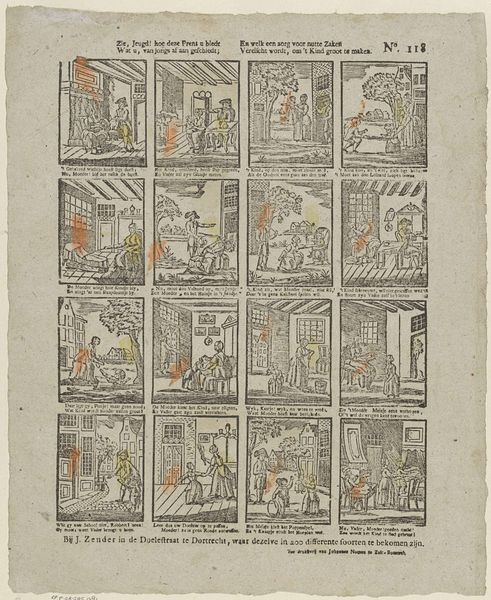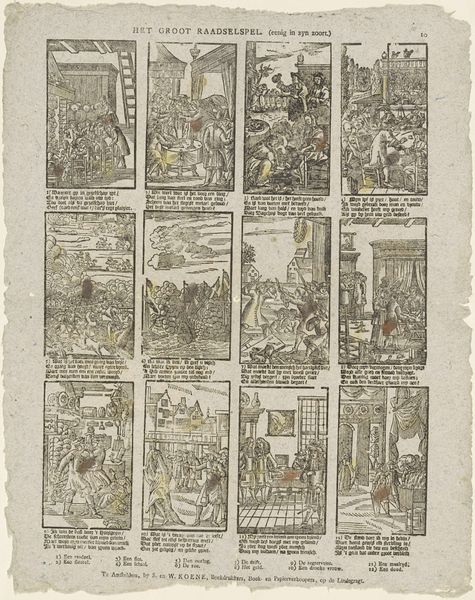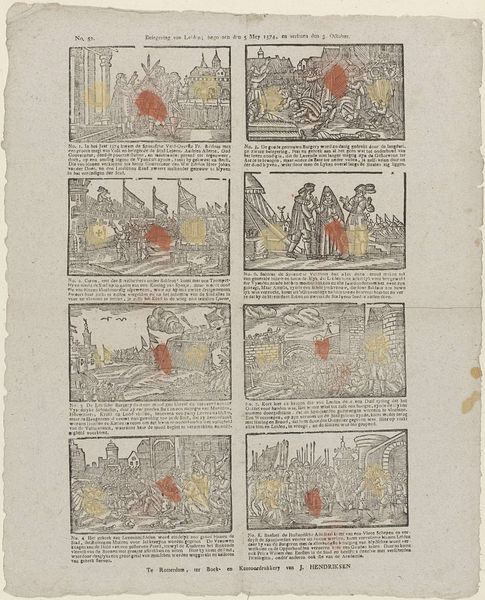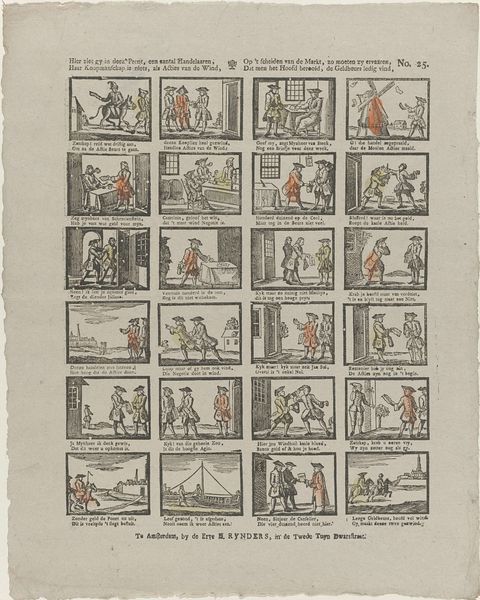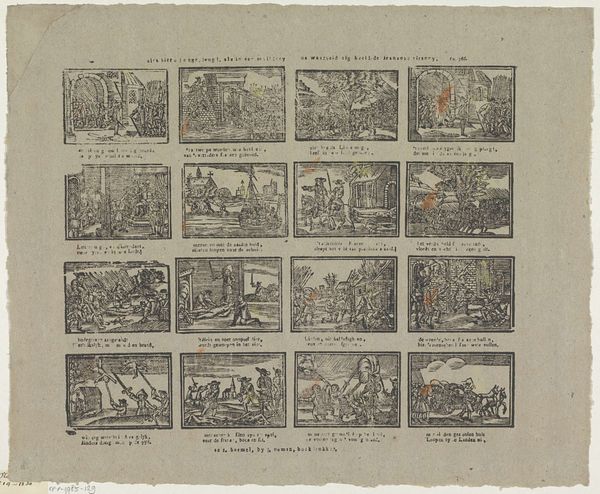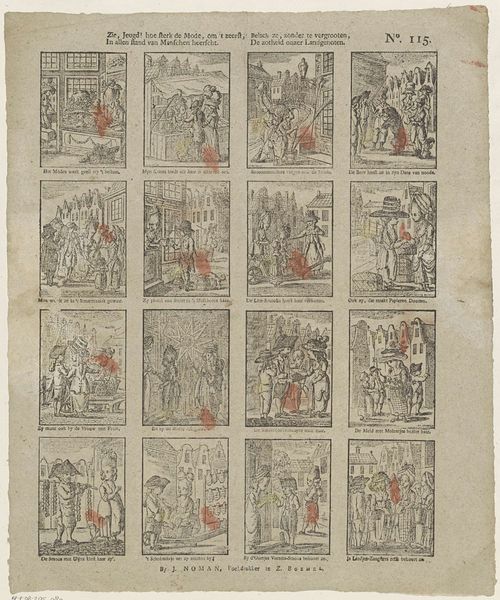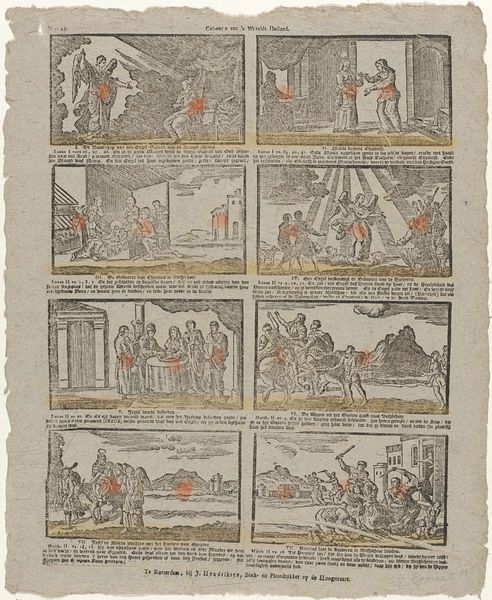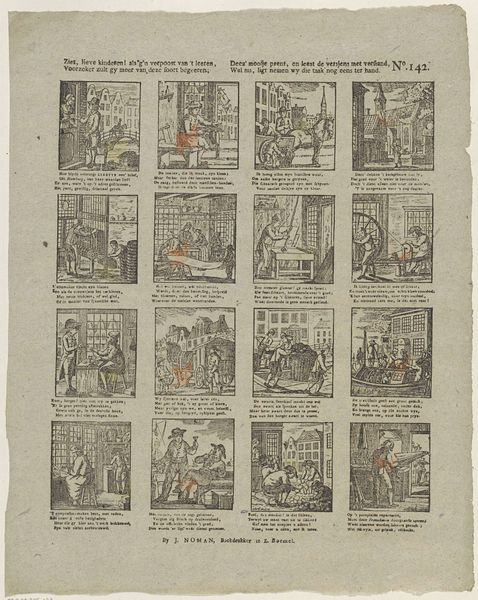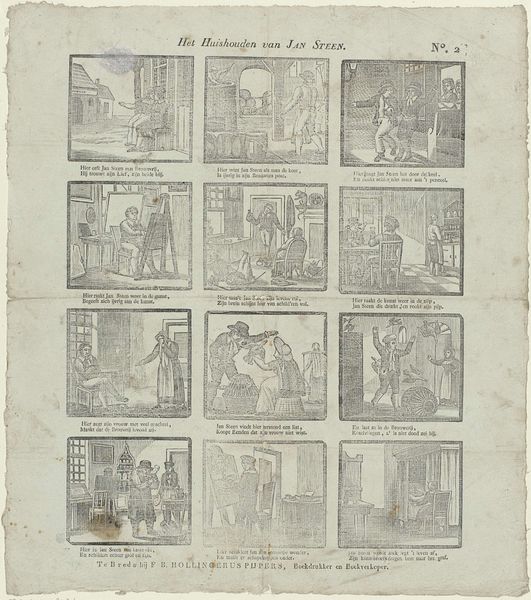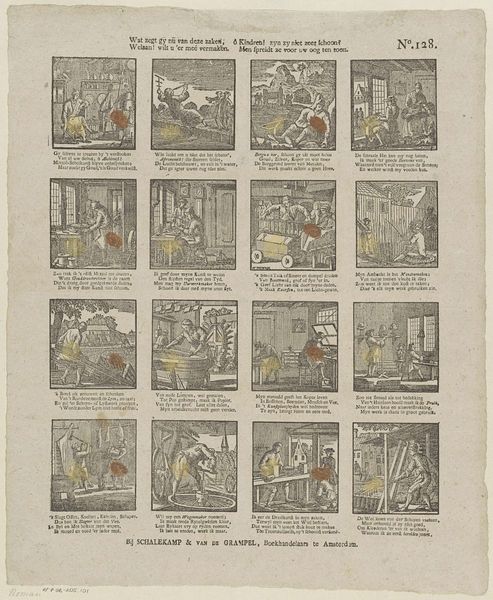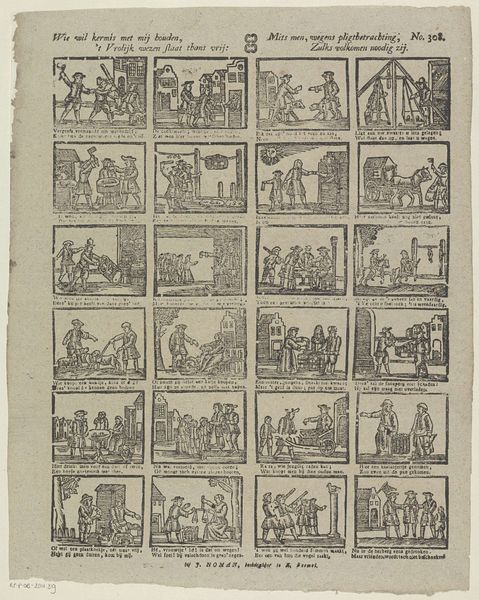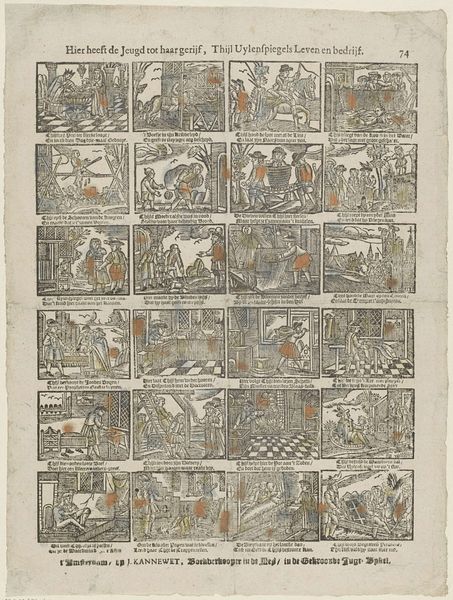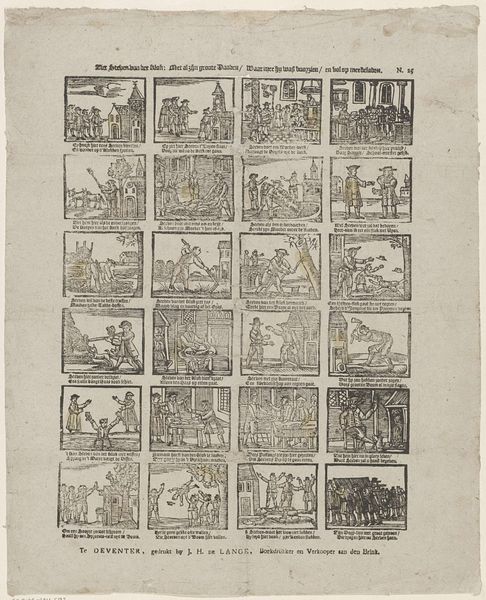
Verschiet van zaken kunt gy vinden, / Leergraage jeudg! in prent by prent. / Wilt uwe oplettend heid verbinden / Aan alles waar g uw oog naar wend 1806 - 1830
0:00
0:00
hermanusnuman
Rijksmuseum
graphic-art, print, engraving
#
graphic-art
#
comic strip sketch
#
aged paper
#
narrative-art
# print
#
old engraving style
#
sketch book
#
personal sketchbook
#
sketchwork
#
romanticism
#
pen work
#
sketchbook drawing
#
genre-painting
#
storyboard and sketchbook work
#
sketchbook art
#
engraving
Dimensions: height 405 mm, width 335 mm
Copyright: Rijks Museum: Open Domain
Curator: So, what catches your eye about Hermanus Numan's "Verschiet van zaken kunt gy vinden…" engraving? It dates back to the early 19th century. Editor: Well, first off, it's kind of like a page from a storybook, but for tradesmen. Each little frame shows a different job. What stories do you think this print is trying to tell? Curator: The framing is precisely the point. Consider the social and economic landscape of the time. Guilds were powerful, apprenticeship was essential. What role do you think art plays in the professional aspirations and expectations of young Dutch people? Editor: I suppose these prints provided instruction and reinforced a certain social hierarchy, maybe? A vision of the world to strive toward. Were there alternative narratives or dissenting voices during this time? Curator: Absolutely. Though visually appealing, such prints arguably played a part in shaping a very gendered, classed view of labour. What wasn't shown is as crucial as what was. For example, Where are the depictions of women in labour? The romanticized notion of craft, ignoring exploitation? Editor: So, we need to question what isn't immediately apparent, the power dynamics and hidden ideologies embedded in these images? Curator: Precisely! By understanding the cultural context, we unveil its selective portrayal of reality. Whose stories were prioritized, and whose were erased? Editor: It’s eye-opening to see how much a seemingly simple print can reveal about societal structures. I'll definitely look at art with a more critical eye now. Curator: Excellent! Remember, art doesn't exist in a vacuum. Engaging with its historical context allows us to have a deeper conversation with the art.
Comments
No comments
Be the first to comment and join the conversation on the ultimate creative platform.
